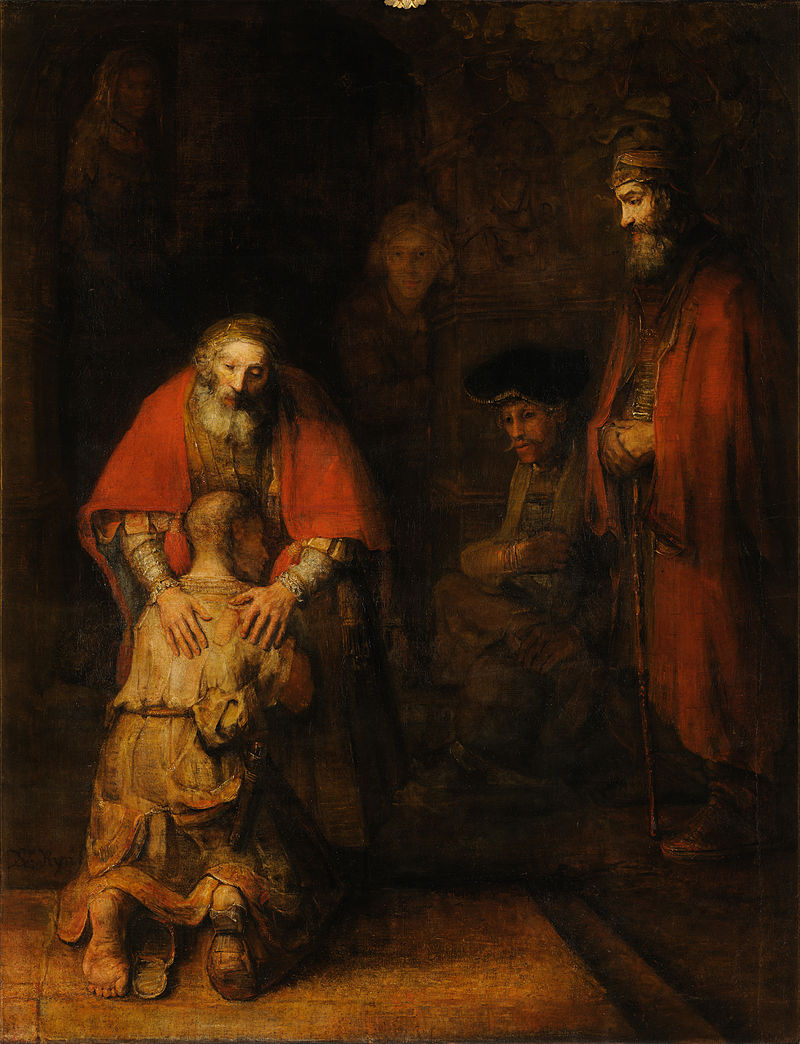Three Cornelias: Navigating Loss With the Bible & Rembrandtಮಾದರಿ

The Return of the Prodigal Son (c. 1669)

By the time Rembrandt painted The Return of the Prodigal Son, he was a man who had lived long in the shadow of grief. His fame had faded. His wealth had vanished. His reputation had been marred. This was not the work of a young man chasing greatness. This was the work of a man trying to find his way home.
The painting is quiet. No movement, no spectacle. Just a father and a son—and grief thick in the atmosphere. The younger son kneels, bones pressing through his clothes, head shaved, foot worn and cracked. His arms cling weakly to his father’s waist, but it is the father’s arms—broad, weathered, steady—that hold the son in place.
Rembrandt knew what it meant to be that son. To return empty. To be undone by loss. To have nothing left but need.
“But while he was still a long way off,
his father saw him and felt compassion,
and ran and embraced him and kissed him.” (Luke 15:20 ESV)
When you are grieving, the return feels impossible. You don’t feel worthy of joy. You don’t feel capable of celebration. All you know is what you’ve lost—and maybe who you’ve become in the losing.
That’s why this story matters. That’s why this painting is so powerful. The father doesn’t wait with conditions. He doesn’t ask for explanations. He simply sees his child, with both his soul and his sole (of his foot) exposed as impoverished.
In The Return of the Prodigal Son, we see the shape of Rembrandt’s hope—not in resurrection from pain, but in the embrace of the Father within it.
But then, off to the side, stands the elder brother. His hands are clasped. His face is stiff. His clothes are clean. He is the picture of control, of dignity—and of distance. He, too, is grieving, though he doesn’t name it. His bitterness is a mask for pain. The story doesn’t say what he’s lost—but something has hardened him.
“But he was angry and refused to go in…
‘All these years I’ve served you...’” (Luke 15:28–29 ESV)
How often do we let grief make us guarded, resentful, alone? We ache quietly, while pretending to be okay—hoping duty will earn back what love alone can restore.
But the Father comes outside for him too.
Grief leaves us ragged. We may not have the words. We may not even have the strength to ask for healing. But the Father still sees. Still runs. Still welcomes.
Like Rembrandt near the end of his life, we can bring our sorrow home—not for answers, but for embrace.
“My son, you are always with me, and all that is mine is yours.” (Luke 15:31 ESV)
ದೇವರ ವಾಕ್ಯ
About this Plan

This devotional reading plan invites you to walk through the depths of grief and hope alongside the biblical story and the hauntingly honest art of Rembrandt. Through the lens of his personal losses—including two daughters (both named Cornelia) and a son (unnamed) who died in infancy, and the complicated joy of a third daughter Cornelia, who survived into adulthood—we explore how faith, scripture, and creativity can speak into our sorrow. Let Rembrandt’s journey and the truth of God’s Word guide you through lament, healing, and the quiet strength of enduring love.
More
ವೈಶಿಷ್ಟ್ಯದ ಯೋಜನೆಗಳು

Not Giving Into Fear and Peer Pressure: Devotions for Girls (I Am Fearless)

Jesus Never Said ‘Hustle’: Finding True Rest in a Burnout World

Fearless & Free: Overcoming Fear With Faith a 5-Day Plan With Kelly Roberson

God Gives Good Gifts to Everyone

Adventure in Evangelism

Forgive Them Too??

Ways to Overcome Your Fears: Devotions for Girls (I Am Fearless)

Who Is Jesus?

When God Is Silent: Finding Faith in the Waiting
